Shock Waves in Laser-Induced Plasmas
Abstract
1. Introduction
2. Shock Wave and Plasmas
3. Diagnostic Applications
4. Reflection and Interaction of Shock Waves
5. Enhancement Effects of Laser-Induced Plasma Optical Emission
6. Shock Waves in Liquids
7. Conclusions
Author Contributions
Funding
Acknowledgments
Conflicts of Interest
References
- Bethe, H.A.; Fuchs, K.; Hirschfelder, J.O.; Magee, J.L.; Peierls, R.E.; van Neumann, J. Blast Wave; Los Alamos Scientific Laboratory, University of California: Los Alamos, NM, USA, 1947; Available online: https://fas.org/sgp/othergov/doe/lanl/docs1/00320773.pdf (accessed on 22 April 2019).
- Taylor, G.I. The formation of a blast wave by a very intense explosion I. Theoretical discussion. Proc. R. Soc. Lond. Ser. A Math. Phys. Sci. 1950, 201, 159–174. [Google Scholar] [CrossRef]
- Sedov, L.I. Propagation of strong blast waves. Prikladnaya Matematika i Mekhanika (Appl. Math. Mech. Leningrad) 1946, 10, 241–250. [Google Scholar]
- Sedov, L.I. Similarity and Dimensional Methods in Mechanics; Academic Press: Cambridge, MA, USA, 1959. [Google Scholar]
- Deakin, M.A.B. G.I. Taylor and the Trinity test. Int. J. Math. Educ. Sci. Technol. 2011, 42, 1069–1079. [Google Scholar] [CrossRef]
- Taylor, G.I. The formation of a blast wave by a very intense explosion.—II. The atomic explosion of 1945. Proc. R. Soc. Lond. Ser. A Math. Phys. Sci. 1950, 201, 175–186. [Google Scholar] [CrossRef]
- Batchelor, G.K. The Life and Legacy of G.I. Taylor; Cambridge University Press: Cambridge, MA, USA, 2008. [Google Scholar]
- Gatti, M.; Palleschi, V.; Salvetti, A.; Singh, D.; Vaselli, M. Spherical shock waves in laser produced plasmas in gas. Opt. Commun. 1988, 69, 141–146. [Google Scholar] [CrossRef]
- Harith, M.A.; Palleschi, V.; Salvetti, A.; Singh, D.P.; Tropiano, G.; Vaselli, M. Hydrodynamic evolution of laser driven diverging shock waves. Laser Part. Beams 1990, 8, 247–252. [Google Scholar] [CrossRef]
- Zel’dovich, I.B.; Raĭzer, I.P. Physics of Shock Waves and High-Temperature Hydrodynamic Phenomena; Dover Publications: Mineola, NY, USA, 2002. [Google Scholar]
- Dors, I.G.; Parigger, C.G. Computational fluid-dynamic model of laser-induced breakdown in air. Appl. Opt. 2003, 42, 5978. [Google Scholar] [CrossRef] [PubMed]
- Harilal, S.S.; Miloshevsky, G.V.; Diwakar, P.K.; Lahaye, N.L.; Hassanein, A. Experimental and computational study of complex shockwave dynamics in laser ablation plumes in argon atmosphere. Phys. Plasmas 2012, 19, 083504. [Google Scholar] [CrossRef]
- Farid, N.; Harilal, S.S.; Ding, H.; Hassanein, A. Emission features and expansion dynamics of nanosecond laser ablation plumes at different ambient pressures. J. Appl. Phys. 2014, 115, 033107. [Google Scholar] [CrossRef]
- Miloshevsky, A.; Harilal, S.S.; Miloshevsky, G.; Hassanein, A. Dynamics of plasma expansion and shockwave formation in femtosecond laser-ablated aluminum plumes in argon gas at atmospheric pressures. Phys. Plasmas 2014, 21, 043111. [Google Scholar] [CrossRef]
- Hussein, A.E.; Diwakar, P.K.; Harilal, S.S.; Hassanein, A. The role of laser wavelength on plasma generation and expansion of ablation plumes in air. J. Appl. Phys. 2013, 113, 143305. [Google Scholar] [CrossRef]
- Harilal, S.S.; Bindhu, C.V.; Tillack, M.S.; Najmabadi, F.; Gaeris, A.C. Plume splitting and sharpening in laser-produced aluminium plasma. J. Phys. D Appl. Phys. 2002, 35, 2935–2938. [Google Scholar] [CrossRef]
- Harilal, S.S. Influence of spot size on propagation dynamics of laser-produced tin plasma. J. Appl. Phys. 2007, 102, 123306. [Google Scholar] [CrossRef]
- Harilal, S.S.; O’Shay, B.; Tao, Y.; Tillack, M.S. Ambient gas effects on the dynamics of laser-produced tin plume expansion. J. Appl. Phys. 2006, 99, 083303. [Google Scholar] [CrossRef]
- Harilal, S.S.; Sizyuk, T.; Hassanein, A.; Campos, D.; Hough, P.; Sizyuk, V. The effect of excitation wavelength on dynamics of laser-produced tin plasma. J. Appl. Phys. 2011, 109, 063306. [Google Scholar] [CrossRef]
- Harilal, S.S.; Bindhu, C.V.; Tillack, M.S.; Najmabadi, F.; Gaeris, A.C. Internal structure and expansion dynamics of laser ablation plumes into ambient gases. J. Appl. Phys. 2003, 93, 2380. [Google Scholar] [CrossRef]
- Hermann, J.; Axente, E.; Craciun, V.; Taleb, A.; Pelascini, F. Evaluation of pressure in a plasma produced by laser ablation of steel. Spectrochim. Acta Part B At. Spectrosc. 2018, 143, 63–70. [Google Scholar] [CrossRef]
- Walters, C.T.; Barnes, R.H.; Iii, R.E.B. Initiation of laser-supported-detonation (LSD) waves. J. Appl. Phys. 1978, 49, 2937. [Google Scholar] [CrossRef]
- Bournot, P.; Pincosy, P.; Inglesakis, G.; Autric, M.; Dufresne, D.; Caressa, J.-P. Propagation of a laser-supported detonation wave. Acta Astronaut. 1979, 6, 257–267. [Google Scholar] [CrossRef]
- Cristoforetti, G.; Lorenzetti, G.; Legnaioli, S.; Palleschi, V. Investigation on the role of air in the dynamical evolution and thermodynamic state of a laser-induced aluminium plasma by spatial- and time-resolved spectroscopy. Spectrochim. Acta Part B At. Spectrosc. 2010, 65, 787–796. [Google Scholar] [CrossRef]
- Ma, Q.; Motto-Ros, V.; Lei, W.; Boueri, M.; Bai, X.; Zheng, L.; Zeng, H.; Yu, J. Temporal and spatial dynamics of laser-induced aluminum plasma in argon background at atmospheric pressure: Interplay with the ambient gas. Spectrochim. Acta Part B At. Spectrosc. 2010, 65, 896–907. [Google Scholar] [CrossRef]
- Harilal, S.S.; Brumfield, B.E.; Cannon, B.D.; Phillips, M.C. Shock Wave Mediated Plume Chemistry for Molecular Formation in Laser Ablation Plasmas. Anal. Chem. 2016, 88, 2296–2302. [Google Scholar] [CrossRef] [PubMed]
- Harilal, S.S.; Yeak, J.; Brumfield, B.E.; Suter, J.; Phillips, M.C. Dynamics of molecular emission features from nanosecond, femtosecond laser and filament ablation plasmas. J. Anal. At. Spectrom. 2016, 31, 1192–1197. [Google Scholar] [CrossRef]
- Hough, P.; McLoughlin, C.; Kelly, T.J.; Hayden, P.; Harilal, S.S.; Mosnier, J.P.; Costello, J.T. Colliding laser produced plasmas as novel sources: Optical diagnostics. J. Phys. Conf. Ser. 2009, 194, 062003. [Google Scholar] [CrossRef]
- Hough, P.; McLoughin, C.; Kelly, T.J.; Hayden, P.; Harilal, S.S.; Mosnier, J.P.; Costello, J.T.; Costello, J. Electron and ion stagnation at the collision front between two laser produced plasmas. J. Phys. D Appl. Phys. 2009, 42, 055211. [Google Scholar] [CrossRef]
- Hough, P.; McLoughlin, C.; Harilal, S.S.; Mosnier, J.P.; Costello, J.T. Emission characteristics and dynamics of the stagnation layer in colliding laser produced plasmas. J. Appl. Phys. 2010, 107, 24904. [Google Scholar] [CrossRef]
- Gambino, N.; Hayden, P.; Mascali, D.; Costello, J.; Fallon, C.; Hough, P.; Yeates, P.; Anzalone, A.; Musumeci, F.; Tudisco, S. Dynamics of colliding aluminium plasmas produced by laser ablation. Appl. Surf. Sci. 2013, 272, 69–75. [Google Scholar] [CrossRef]
- Wu, H.; Wu, C.; Zhang, N.; Zhu, X.; Ma, X.; Zhigilei, L.V. Experimental and computational study of the effect of 1 atm background gas on nanoparticle generation in femtosecond laser ablation of metals. Appl. Surf. Sci. 2018, 435, 1114–1119. [Google Scholar] [CrossRef]
- Harilal, S.S.; Farid, N.; Hassanein, A.; Kozhevin, V.M. Dynamics of femtosecond laser produced tungsten nanoparticle plumes. J. Appl. Phys. 2013, 114, 203302. [Google Scholar] [CrossRef]
- McLoughlin, C.; Hough, P.; Costello, J.; Mosnier, J.-P. Particle diagnostics of a ZnO laser ablation plume for nanostructured material deposition. Appl. Surf. Sci. 2009, 255, 5338–5341. [Google Scholar] [CrossRef]
- Krasniker, R.; Bulatov, V.; Schechter, I. Study of matrix effects in laser plasma spectroscopy by shock wave propagation. Spectrochim. Acta Part B At. Spectrosc. 2001, 56, 609–618. [Google Scholar] [CrossRef]
- Tsuyuki, K.; Miura, S.; Idris, N.; Kurniawan, K.H.; Lie, T.J.; Kagawa, K. Measurement of Concrete Strength Using the Emission Intensity Ratio between Ca(II) 396.8 nm and Ca(I) 422.6 nm in a Nd:YAG Laser-Induced Plasma. Appl. Spectrosc. 2006, 60, 61–64. [Google Scholar] [CrossRef] [PubMed]
- Lahna, K.; Pardede, M.; Kurniawan, K.H.; Kagawa, K.; Tjia, M.O. Direct evidence of laser-induced shock wave plasma from organic targets in low pressure He ambient gas, showing the effect of target hardness on its propagation speed and the resulted spectral performance. Appl. Opt. 2017, 56, 9876. [Google Scholar] [CrossRef]
- Chen, G.; Yeung, E.S. Acoustic signal as an internal standard for quantitation in laser-generated plumes. Anal. Chem. 1988, 60, 2258–2263. [Google Scholar] [CrossRef]
- Pang, H.M.; Wiederin, D.R.; Houk, R.S.; Yeung, E.S. High-repetition-rate laser ablation for elemental analysis in an inductively coupled plasma with acoustic wave normalization. Anal. Chem. 1991, 63, 390–394. [Google Scholar] [CrossRef]
- Conesa, S.; Palanco, S.; Laserna, J.; Laserna, J. Acoustic and optical emission during laser-induced plasma formation. Spectrochim. Acta Part B At. Spectrosc. 2004, 59, 1395–1401. [Google Scholar] [CrossRef]
- Murdoch, N.; Chide, B.; Lasue, J.; Cadu, A.; Sournac, A.; Bassas-Portús, M.; Jacob, X.; Merrison, J.; Iversen, J.; Moretto, C.; et al. Laser-induced breakdown spectroscopy acoustic testing of the Mars 2020 microphone. Planet. Space Sci. 2019, 165, 260–271. [Google Scholar] [CrossRef]
- Chide, B.; Maurice, S.; Murdoch, N.; Lasue, J.; Bousquet, B.; Jacob, X.; Cousin, A.; Forni, O.; Gasnault, O.; Meslin, P.-Y.; et al. Listening to laser sparks: A link between Laser-Induced Breakdown Spectroscopy, acoustic measurements and crater morphology. Spectrochim. Acta Part B At. Spectrosc. 2019, 153, 50–60. [Google Scholar] [CrossRef]
- Wiens, R.C.; Maurice, S.; Perez, F.R. The SuperCam remote sensing instrument suite for the mars 2020 rover: A preview. Spectroscopy (Santa Monica) 2017, 32, 50–55. [Google Scholar]
- Wu, W.; Adeosun, A.; Axelbaum, R.L. A new method of flame temperature measurement utilizing the acoustic emissions from laser-induced plasmas. Proc. Combust. Inst. 2019, 37, 1409–1415. [Google Scholar] [CrossRef]
- Landau, L.D.; Lifshitz, E.M. Fluid Mechanics; Pergamon Press: Oxford, UK, 1987. [Google Scholar]
- De Rosa, M.; Famà, F.; Palleschi, V.; Singh, D.P.; Vaselli, M. Derivation of the critical angle for Mach reflection for strong shock waves. Phys. Rev. A 1992, 45, 6130–6132. [Google Scholar] [CrossRef]
- De Rosa, M.; Famà, F.; Palleschi, V.; Salvetti, A.; Singh, D.P.; Vaselli, M. On the process of Mach wave generation in air. Laser Part. Beams 1991, 9, 453–464. [Google Scholar] [CrossRef]
- De Rosa, M.; Famà, F.; Harith, M.; Palleschi, V.; Salvetti, A.; Singh, D.; Vaselli, M.; Barkudarov, E.; Mdivnishvili, M.; Sokolov, I.; et al. Mach reflection phenomenon in the interaction of spherical shock waves in air. Phys. Lett. A 1991, 156, 89–95. [Google Scholar] [CrossRef]
- Harith, M.A.; Palleschi, V.; Salvetti, A.; Vaselli, M.; Barkudarov, E.M.; Mdivnishvili, M.O.; Taktakishvili, M.I. Investigation of the dynamics of converging shock waves in spherical and annular configurations. J. Phys. D Appl. Phys. 1989, 22, 1451–1455. [Google Scholar] [CrossRef]
- Corsi, M.; Cristoforetti, G.; Hidalgo, M.; Iriarte, D.; Legnaioli, S.; Palleschi, V.; Salvetti, A.; Tognoni, E. Effect of Laser-Induced Crater Depth in Laser-Induced Breakdown Spectroscopy Emission Features. Appl. Spectrosc. 2005, 59, 853–860. [Google Scholar] [CrossRef]
- Giulietti, A.; Vaselli, M.; Giammanco, F. Shadowgraphic detection of spherical implosive shock fronts produced by laser pulses. Opt. Commun. 1980, 33, 257–261. [Google Scholar] [CrossRef]
- Singh, D.P.; Harith, M.A.; Palleschi, V.; Vaselli, M.; Panarella, E. Interaction of imploding shock waves with expanding central plasma in spherical pinch experiments: Simulation analysis. J. Fusion Energy 1990, 9, 513–516. [Google Scholar] [CrossRef]
- Singh, D.P.; Harith, M.A.; Palleschi, V.; Tropiano, G.; Vaselli, M.; Salingaros, N.; Panarella, E. The spherical pinch: Generalized scaling laws and experimental verification of the stability of imploding shock waves in spherical geometry. Laser Part. Beams 1990, 8, 253–263. [Google Scholar] [CrossRef]
- Singh, D.P.; Palleschi, V.; Vaselli, M.; Panarella, E. Scaling laws for spherical pinch experiments. Laser Part. Beams 1991, 9, 435–442. [Google Scholar] [CrossRef]
- Zeng, X.C.; Vaselli, M.; Singh, D.P.; Palleschi, V.; Bredice, F. Scaling laws considering thermal radiation influence for spherical pinch experiments. J. Fusion Energy 1994, 13, 39–44. [Google Scholar] [CrossRef]
- Popov, A.M.; Colao, F.; Fantoni, R. Enhancement of LIBS signal by spatially confining the laser-induced plasma. J. Anal. At. Spectrom. 2009, 24, 602. [Google Scholar] [CrossRef]
- Popov, A.M.; Colao, F.; Fantoni, R. Spatial confinement of laser-induced plasma to enhance LIBS sensitivity for trace elements determination in soils. J. Anal. At. Spectrom. 2010, 25, 837. [Google Scholar] [CrossRef]
- Yin, H.; Hou, Z.; Yuan, T.; Ni, W.; Wang, Z.; Li, Z. Application of spatial confinement for gas analysis using laser-induced breakdown spectroscopy to improve signal stability. J. Anal. At. Spectrom. 2015, 30, 922–928. [Google Scholar] [CrossRef]
- Fu, Y.; Hou, Z.; Wang, Z. Physical insights of cavity confinement enhancing effect in laser-induced breakdown spectroscopy. Opt. Express 2016, 24, 3055. [Google Scholar] [CrossRef]
- Ahmed, R.; Akthar, M.; Jabbar, A.; Umar, Z.A.; Ahmed, N.; Iqbal, J.; Baig, M.A. Signal Intensity Enhancement by Cavity Confinement of Laser-Produced Plasma. IEEE Trans. Plasma Sci. 2019, 47, 1616–1620. [Google Scholar] [CrossRef]
- Uebbing, J.; Brust, J.; Sdorra, W.; Leis, F.; Niemax, K. Reheating of a Laser-Produced Plasma by a Second Pulse Laser. Appl. Spectrosc. 1991, 45, 1419–1423. [Google Scholar] [CrossRef]
- St-Onge, L.; Sabsabi, M.; Cielo, P. Analysis of solids using laser-induced plasma spectroscopy in double-pulse mode. Spectrochim. Acta Part B At. Spectrosc. 1998, 53, 407–415. [Google Scholar] [CrossRef]
- St-Onge, L.; Detalle, V.; Sabsabi, M. Enhanced laser-induced breakdown spectroscopy using the combination of fourth-harmonic and fundamental Nd:YAG laser pulses. Spectrochim. Acta Part B At. Spectrosc. 2002, 57, 121–135. [Google Scholar] [CrossRef]
- Pershin, S.M. Transformation of the optical spectrum of a laser plasma when a surface is irradiated with a double pulse. Sov. J. Quantum Electron. 1989, 19, 215–218. [Google Scholar] [CrossRef]
- Corsi, M.; Cristoforetti, G.; Giuffrida, M.; Hidalgo, M.; Legnaioli, S.; Palleschi, V.; Salvetti, A.; Tognoni, E.; Vallebona, C. Three-dimensional analysis of laser induced plasmas in single and double pulse configuration. Spectrochim. Acta Part B At. Spectrosc. 2004, 59, 723–735. [Google Scholar] [CrossRef]
- Cristoforetti, G.; Palleschi, V. Double-pulse laser ablation of solid targets in ambient gas: Mechanisms and effects. In Laser Ablation: Effects and Applications; Nova Science Publishers, Inc.: Hauppauge, NY, USA, 2011. [Google Scholar]
- Tognoni, E.; Cristoforetti, G. Basic mechanisms of signal enhancement in ns double-pulse laser-induced breakdown spectroscopy in a gas environment. J. Anal. At. Spectrom. 2014, 29, 1318–1338. [Google Scholar] [CrossRef]
- Cristoforetti, G.; Legnaioli, S.; Palleschi, V.; Salvetti, A.; Tognoni, E. Characterization of a collinear double pulse laser-induced plasma at several ambient gas pressures by spectrally- and time-resolved imaging. Appl. Phys. A 2005, 80, 559–568. [Google Scholar] [CrossRef]
- Cristoforetti, G.; Legnaioli, S.; Palleschi, V.; Pardini, L.; Salvetti, A.; Tognoni, E. On the enhancement of laser induced breakdown spectroscopy signal in double pulse configuration. SPIE Proc. 2006, 6284, 628406. [Google Scholar]
- Cristoforetti, G.; Legnaioli, S.; Palleschi, V.; Tognoni, E.; Benedetti, P.A.A. Crater drilling enhancement obtained in parallel non-collinear double-pulse laser ablation. Appl. Phys. A Mater. Sci. Process. 2010, 98, 219–225. [Google Scholar] [CrossRef]
- Cristoforetti, G.; Legnaioli, S.; Palleschi, V.; Salvetti, A.; Tognoni, E. Influence of ambient gas pressure on laser-induced breakdown spectroscopy technique in the parallel double-pulse configuration. Spectrochim. Acta Part B At. Spectrosc. 2004, 59, 1907–1917. [Google Scholar] [CrossRef]
- Cristoforetti, G.; Legnaioli, S.; Palleschi, V.; Salvetti, A.; Tognoni, E. Effect of target composition on the emission enhancement observed in Double-Pulse Laser-Induced Breakdown Spectroscopy. Spectrochim. Acta Part B At. Spectrosc. 2008, 63, 312–323. [Google Scholar] [CrossRef]
- Tian, Y.; Xue, B.; Song, J.; Lu, Y.; Zheng, R. Stabilization of laser-induced plasma in bulk water using large focusing angle. Appl. Phys. Lett. 2016, 109, 061104. [Google Scholar] [CrossRef]
- Arndt, R.E.A. Cavitation in Fluid Machinery and Hydraulic Structures. Annu. Rev. Fluid Mech. 1981, 13, 273–326. [Google Scholar] [CrossRef]
- Lindau, O.; Lauterborn, W. Cinematographic observation of the collapse and rebound of a laser-produced cavitation bubble near a wall. J. Fluid Mech. 2003, 479, 327–348. [Google Scholar] [CrossRef]
- Lauterborn, W.; Ohl, C.-D. Cavitation bubble dynamics. Ultrason. Sonochem. 1997, 4, 65–75. [Google Scholar] [CrossRef]
- Noack, J.; Hammer, D.X.; Noojin, G.D.; Rockwell, B.A.; Vogel, A. Influence of pulse duration on mechanical effects after laser-induced breakdown in water. J. Appl. Phys. 1998, 83, 7488–7495. [Google Scholar] [CrossRef]
- Harith, M.A.; Palleschi, V.; Salvetti, A.; Singh, D.P.; Vaselli, M.; Dreiden, G.V.; Ostrovsky, Y.I.; Semenova, I.V. Dynamics of laser-driven shock waves in water. J. Appl. Phys. 1989, 66, 5194–5197. [Google Scholar] [CrossRef]
- Famà, F.; Harith, M.A.; Palleschi, V.; Salvetti, A.; Singh, D.P.; Vaselli, M.; Dreiden, G.V.; Ostrovsky, Y.I.; Semenova, I.V. Hydrodynamics of laser-produced shock waves in water: Reflection and transmission measurements. J. Appl. Phys. 1991, 69, 1660–1665. [Google Scholar] [CrossRef]
- De Giacomo, A.; Dell’Aglio, M.; de Pascale, O.; Capitelli, M. From single pulse to double pulse ns-Laser Induced Breakdown Spectroscopy under water: Elemental analysis of aqueous solutions and submerged solid samples. Spectrochim. Acta Part B At. Spectrosc. 2007, 62, 721–738. [Google Scholar] [CrossRef]
- Lazić, V.; Laserna, J.; Jovicevic, S. Insights in the laser induced breakdown spectroscopy signal generation underwater using dual pulse excitation—Part II: Plasma emission intensity as a function of interpulse delay. Spectrochim. Acta Part B At. Spectrosc. 2013, 82, 50–59. [Google Scholar] [CrossRef]
- Lazić, V.; Laserna, J.; Jovicevic, S.; Laserna, J. Insights in the laser-induced breakdown spectroscopy signal generation underwater using dual pulse excitation—Part I: Vapor bubble, shockwaves and plasma. Spectrochim. Acta Part B At. Spectrosc. 2013, 82, 42–49. [Google Scholar] [CrossRef]
- Tiberi, M.; Simonelli, A.; Marsili, P.; Giammanco, F.; Cristoforetti, G. Toward the optimization of double-pulse LIBS underwater: Effects of experimental parameters on the reproducibility and dynamics of laser-induced cavitation bubble. Appl. Opt. 2012, 51, B30. [Google Scholar]
- Discetti, S.; Ianiro, A.; Ianiro, A. Experimental Aerodynamics; CRC Press: Boca Raton, FL, USA, 2017. [Google Scholar] [CrossRef]

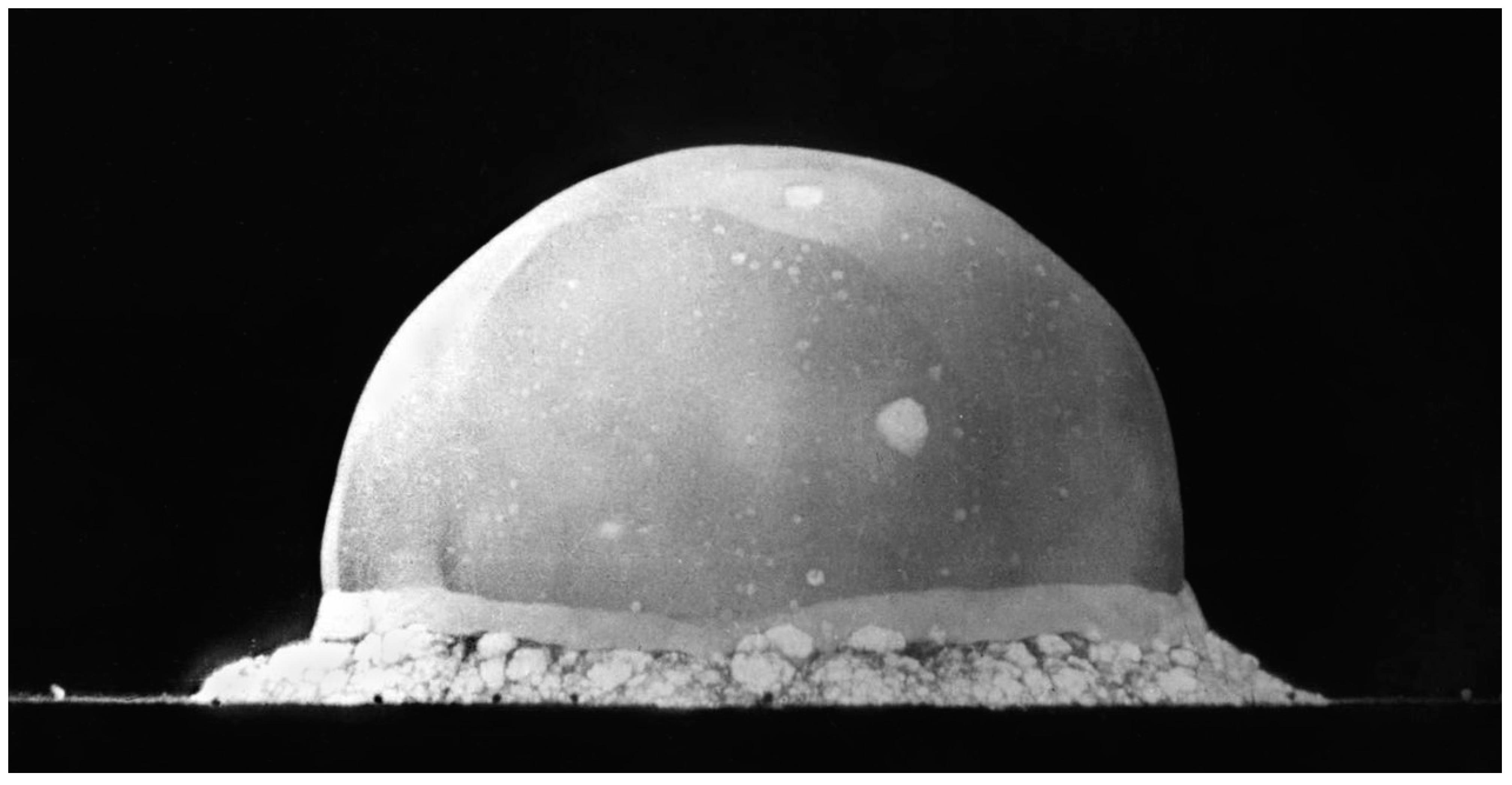
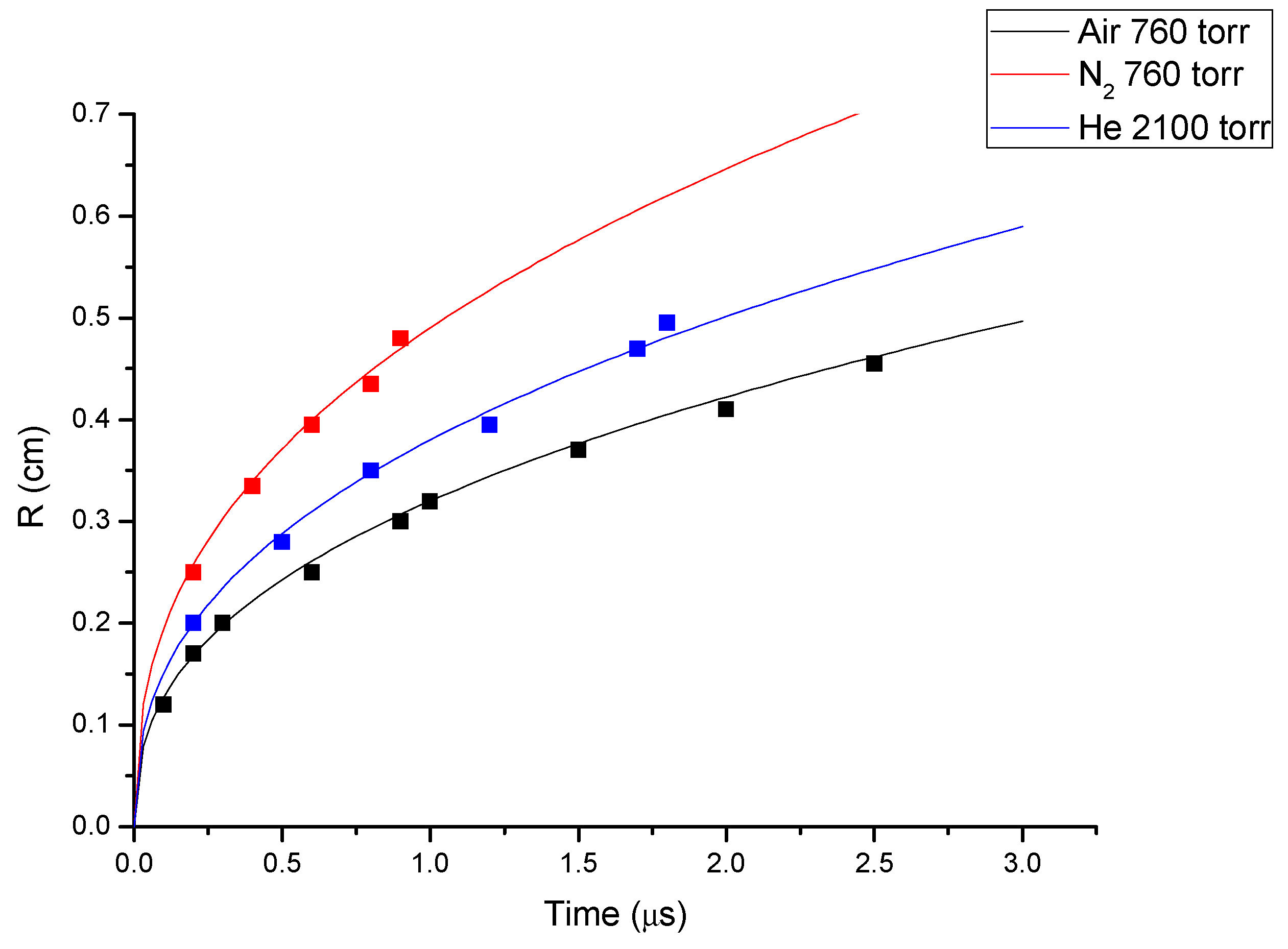
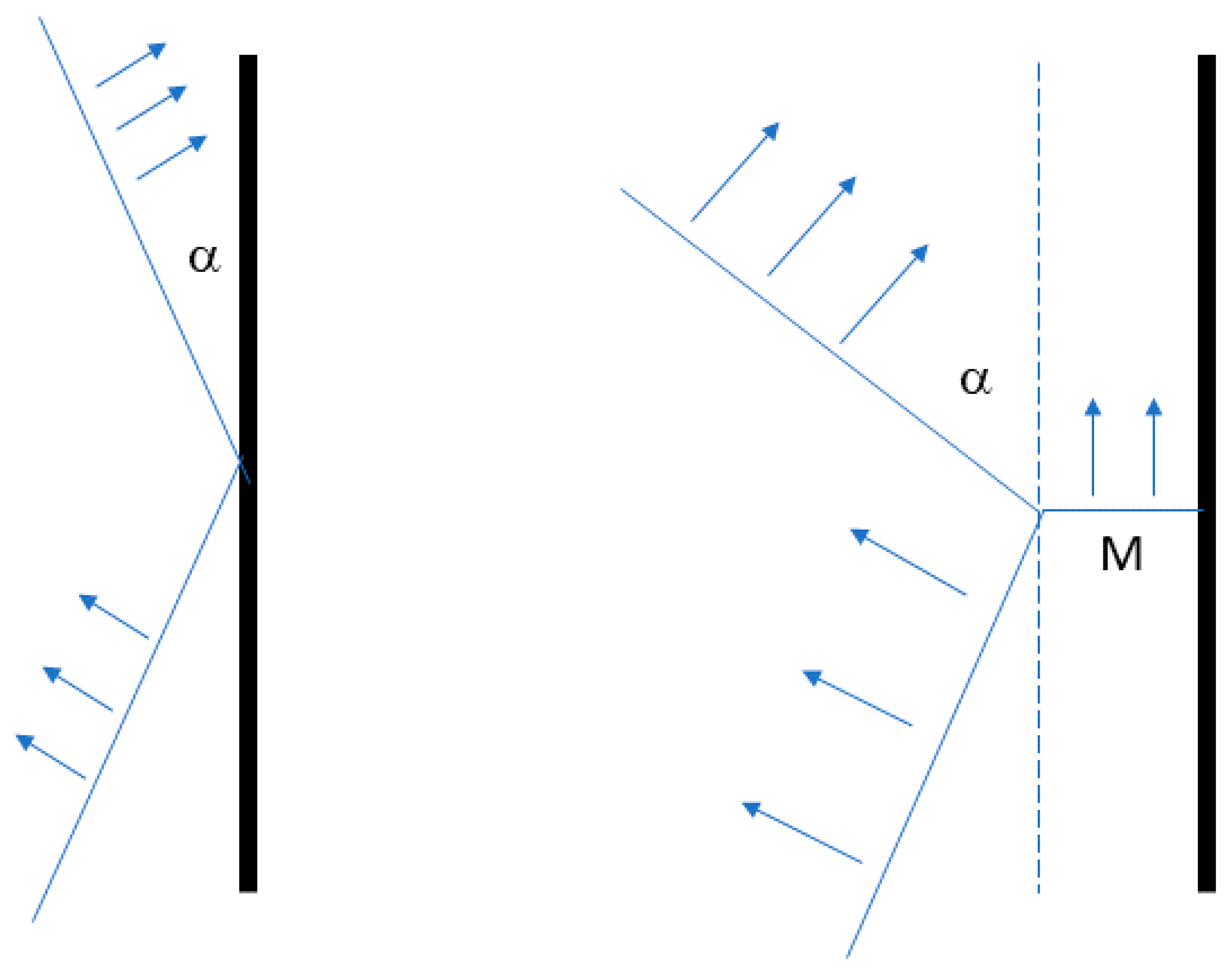
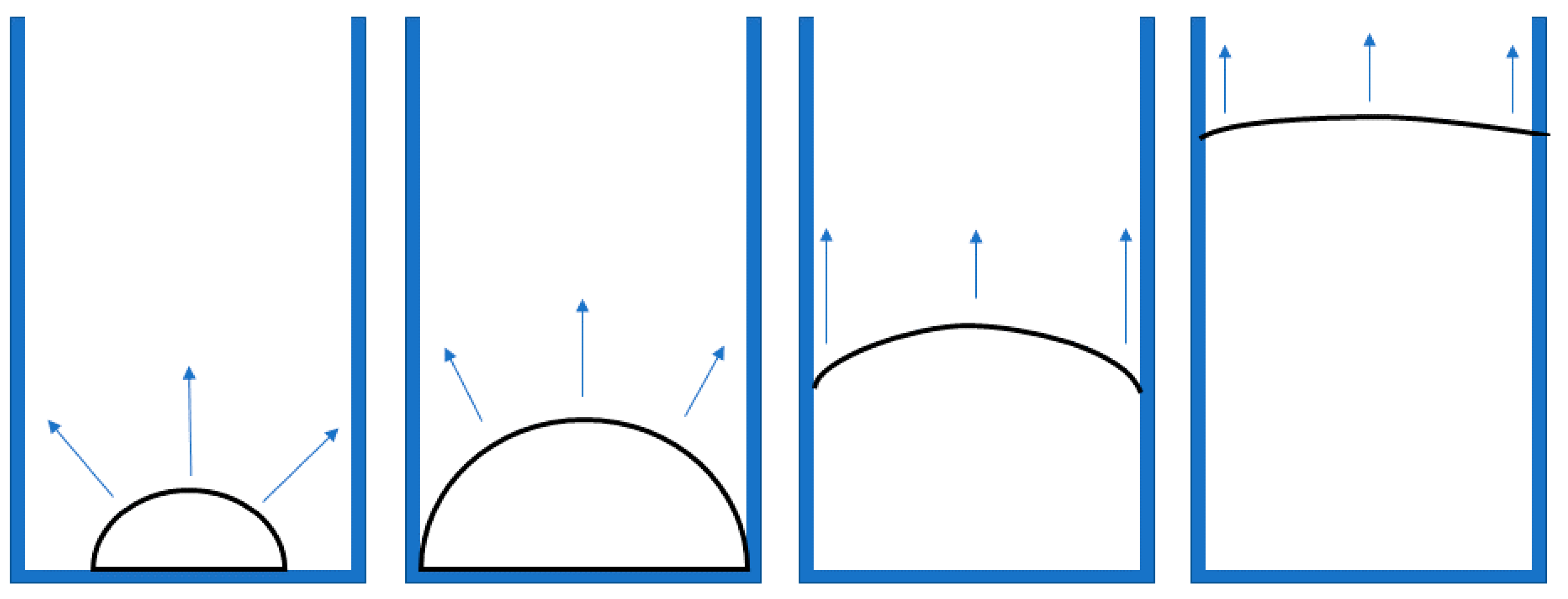
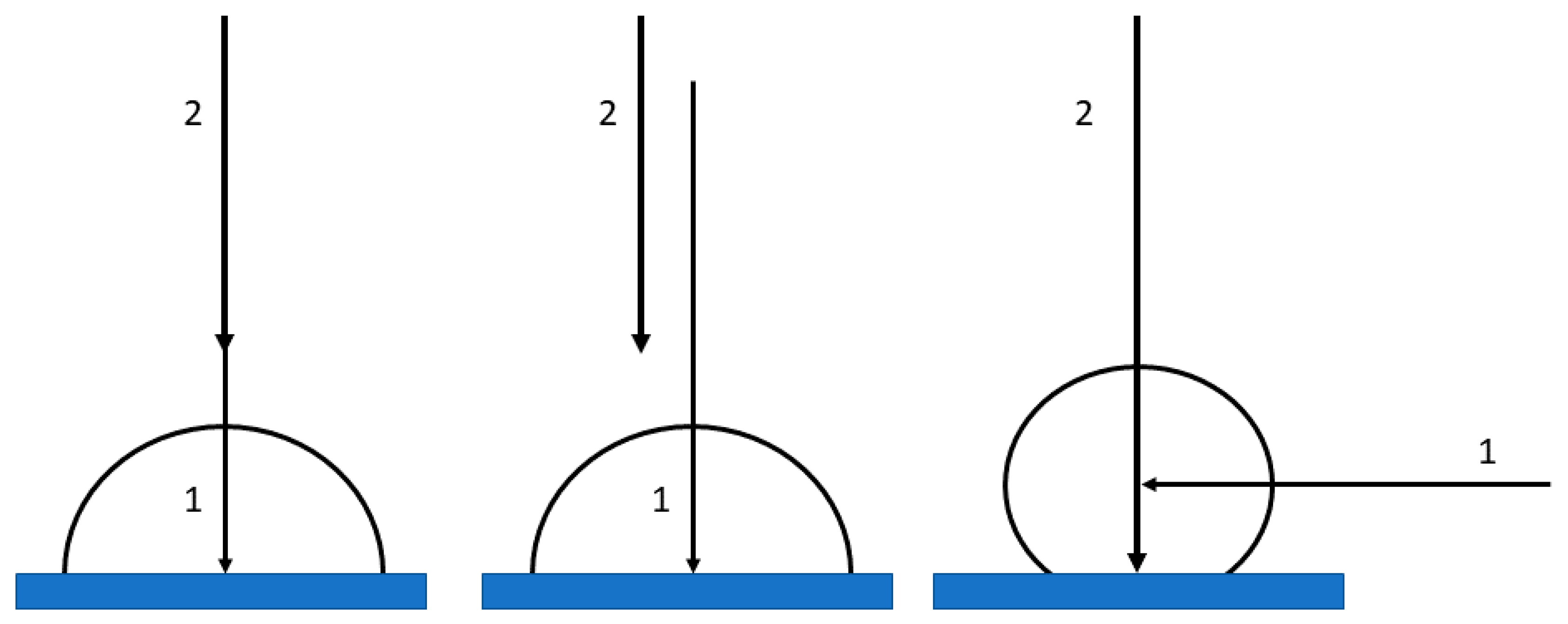
© 2019 by the authors. Licensee MDPI, Basel, Switzerland. This article is an open access article distributed under the terms and conditions of the Creative Commons Attribution (CC BY) license (http://creativecommons.org/licenses/by/4.0/).
Share and Cite
Campanella, B.; Legnaioli, S.; Pagnotta, S.; Poggialini, F.; Palleschi, V. Shock Waves in Laser-Induced Plasmas. Atoms 2019, 7, 57. https://doi.org/10.3390/atoms7020057
Campanella B, Legnaioli S, Pagnotta S, Poggialini F, Palleschi V. Shock Waves in Laser-Induced Plasmas. Atoms. 2019; 7(2):57. https://doi.org/10.3390/atoms7020057
Chicago/Turabian StyleCampanella, Beatrice, Stefano Legnaioli, Stefano Pagnotta, Francesco Poggialini, and Vincenzo Palleschi. 2019. "Shock Waves in Laser-Induced Plasmas" Atoms 7, no. 2: 57. https://doi.org/10.3390/atoms7020057
APA StyleCampanella, B., Legnaioli, S., Pagnotta, S., Poggialini, F., & Palleschi, V. (2019). Shock Waves in Laser-Induced Plasmas. Atoms, 7(2), 57. https://doi.org/10.3390/atoms7020057







